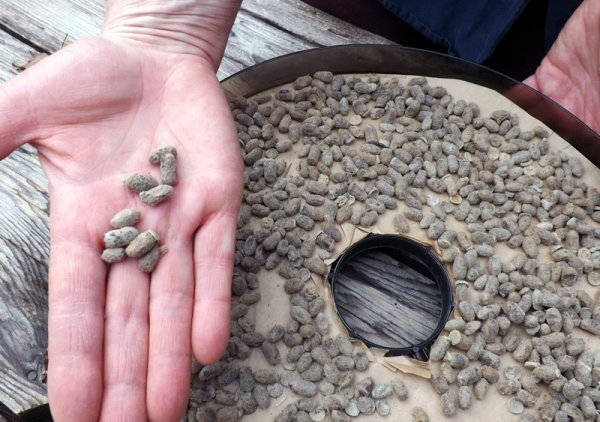 Diane Everson shows off a professional bee box. Photo by Steve Whitford, KP News
Diane Everson shows off a professional bee box. Photo by Steve Whitford, KP News
It’s a known fact that bees are disappearing. Some strains have even become extinct, and when the bee population is threatened, so is our food supply. Virtually all living things depend on the existence of bees.
What’s causing the problem? As usual, it’s humans. Climate and crop changes affect pollen-specific strains, and bees need the wild plant pollens that are disappearing due to overdevelopment.
The biggest killer of bees is the use and overuse of pesticides. Two of the deadliest are Sevin and Penncap-M. Pesticides are transported back to the hives by the bees and mixed in with the pollen. The poisoned pollen contaminates the larva and throughout the hives, causing a mass kill-off. Worse yet, the effectiveness of pesticides can last for years.
Locally, Dianne Everson, a Key Pen resident of 35 years, is a beekeeper involved in repopulating our community with bees —and not just any bee. She works with one of the best pollinating, people-friendly bee there is.
Everson was born in Tacoma and graduated from the University of Puget Sound with a bachelor’s degree in music. Since then, she has performed professionally at many special events and taught piano for years.
In 1994, Everson was visited by her father, Coit Everson, who brought her a crude bee hive. It was a thick piece of wood that had been drilled full of bee-sized holes. The hive was hung up outside in February and by mid-June, it was full of bee larva.
The bees that would emerge the next spring were Osmia Lignaria, or more commonly known as orchard mason bees. Apparently there’s something growing on her property that mason bees like a lot.
In 2005, Everson met local beekeeper Darren Gordon at a bazaar at the Olalla Grange. He sold her on bees and also sold her a commercially built bee box. It was her first. With the help of Gordon’s mentoring, she also became a keeper of bees.
Mason bees get their name from making a paste from mud and plant fiber that is used in nest building. When professional wood blocks are used, the queens partition off the larva in their holes with the paste. In the spring, hatching males chew through the mud plugs, which can take three days to two weeks. When the smaller females hatch, mating begins immediately.
“I’m fascinated by this process,”Everson said. “The queen chooses the sex of the larva; males go in the front of the tube. It’s hard to predict when they’ll come out, but the temperature needs to be above 60 degrees and not raining.”
She said mason bees are better at pollinating than honeybees.
“One female may make as many as 35 trips to secure pollen and as many as 50 trips for their masonry mud,”Everson said. “As few as two females can pollinate the equivalent of a mature apple tree. Each queen will produce six to seven eggs.”
This year, she hopes to fill 300 boxes, which equals approximately 3,000 bees.
“Beekeeping can be interesting to all family members, especially children. They can watch the bees work. Best of all, only the females sting and then only if handled,”she said.
For information about mason bees, Diane Everson can be reached at (253) 884-2046.
UNDERWRITTEN BY THE FUND FOR NONPROFIT NEWS (NEWSMATCH) AT THE MIAMI FOUNDATION, THE ANGEL GUILD, ADVERTISERS, DONORS AND PEOPLE WHO SUPPORT INDEPENDENT, NONPROFIT LOCAL NEWS